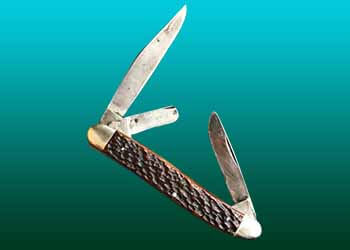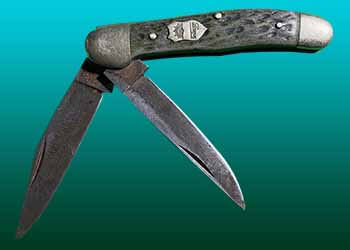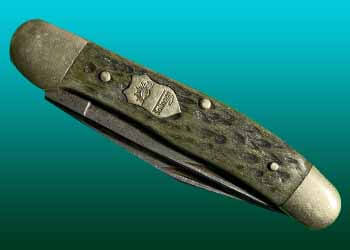Dating a Carl Schlieper knife is like embarking on a journey through history, craftsmanship, and tradition. These knives, renowned for their exceptional quality and design, have captured the hearts of collectors and outdoor enthusiasts alike for generations. With their roots tracing back to 19th-century Germany, Carl Schlieper knives embody a rich heritage that speaks volumes about their value and uniqueness. In this comprehensive guide, we will explore the fascinating world of Carl Schlieper knives, providing you with insights on how to date a Carl Schlieper knife, understand its historical significance, and appreciate its enduring charm.
Contents
The Legacy of Carl Schlieper Knives
To truly appreciate the artistry and craftsmanship behind Carl Schlieper knives, it is crucial to delve into their historical legacy. Founded in Solingen, Germany, by Carl Schlieper Sr., the company has been producing knives since the mid-1800s. The Schlieper family’s dedication to precision and quality quickly established them as leaders in the cutlery industry. The brand has evolved over time, blending traditional techniques with modern innovations, ensuring each knife carries the legacy of its founders.
How to Date a Carl Schlieper Knife?

Recognizing Authentic Carl Schlieper Knives:
Before venturing into the realm of dating these knives, it is essential to verify their authenticity. Authentic Carl Schlieper knives bear distinct marks that distinguish them from counterfeits or replicas. Look for the brand’s logo, which typically includes the name “Carl Schlieper” along with an image of a trident or twin fish. The blade may also feature the words “Germany” or “Solingen.” Inspecting the knife for these markings is crucial in determining its legitimacy and vintage.
Decoding Knife Markings and Tang Stamps:
One of the most crucial aspects of dating a Carl Schlieper knife is understanding the various markings and tang stamps found on the blade. These stamps often provide clues about the knife’s age, production period, and even the specific model. By carefully examining the knife’s tang, the metal portion of the blade that extends into the handle, you can uncover valuable information about its origins. Compare the tang stamp with known references and guides to determine the approximate manufacturing date.
Catalogs and Price Guides:
To enhance your knowledge and assist in dating Carl Schlieper knives, catalogs, and price guides serve as invaluable resources. Over the years, several knife enthusiasts and collectors have compiled comprehensive catalogs documenting the different models and variations produced by Carl Schlieper. These catalogs often contain detailed information, including production dates, model numbers, and specifications. Consulting these references can provide you with a wealth of information to date and authenticate your Carl Schlieper knife accurately.
Seeking Expert Opinion:
Sometimes, the dating process can be challenging due to limited information or conflicting sources. In such cases, reaching out to experts or engaging with fellow collectors can prove immensely helpful. Knife forums, social media groups, and dedicated online communities often have experienced individuals who can share their knowledge and provide guidance. Sharing photographs and detailed descriptions of your Carl Schlieper knife can assist in obtaining valuable insights that might otherwise go unnoticed.
How to Date a Carl Schlieper Knife? [3 Effective Methods]
If you’re eager to unlock the secrets of dating a Carl Schlieper knife, there are several effective methods you can employ to determine its age and historical significance. By utilizing these techniques, you can gain valuable insights into the knife’s production period and enhance your appreciation for its craftsmanship. Here are three effective methods to help you date a Carl Schlieper knife:
Tang Stamps and Markings:
One of the primary ways to date a Carl Schlieper knife is by examining the tang stamps and markings on the blade. Tang stamps are typically imprinted on the metal portion of the blade that extends into the handle. These stamps often provide vital information about the knife’s production period, model, and even specific features. To decode the tang stamps, consult reference guides and catalogs dedicated to Carl Schlieper knives. These resources can help you match the stamp with its corresponding manufacturing date or production era, allowing you to narrow down the age of your knife.
Historical Documentation and Archives:
To delve deeper into the history of Carl Schlieper knives, accessing historical documentation and archives can be immensely valuable. Look for vintage catalogs, advertisements, and other printed materials that provide information about the brand’s knife models, production years, and specifications. Local libraries, cutlery museums, and online archives may house valuable resources that can shed light on the timeline and evolution of Carl Schlieper knives. By cross-referencing the details found in these documents with your own knife’s characteristics, you can gain further insights into its age and historical context.
Expert Consultation:
When in doubt or faced with challenging dating scenarios, seeking the guidance of experts can be invaluable. Connect with knife collectors, enthusiasts, or experts who specialize in Carl Schlieper knives. These individuals may have extensive knowledge, experience, and access to additional resources that can assist you in dating your knife accurately. Knife forums, social media groups, and online communities dedicated to cutlery can be excellent platforms to seek advice and share information. By engaging with experts and sharing detailed photographs and descriptions of your Carl Schlieper knife, you increase your chances of obtaining reliable insights and dating it with confidence.
Challenges To Date a Carl Schlieper Knife

While dating a Carl Schlieper knife can be an exciting endeavor, it is not without its challenges. Several factors can make the dating process complex and require careful consideration. Here are some of the common challenges you may encounter when attempting to date a Carl Schlieper knife:
- Limited Information and Records: One of the primary challenges in dating Carl Schlieper knives is the scarcity of comprehensive records. The brand has a long history that spans over a century, and not all the information has been meticulously documented or preserved. This lack of detailed records can make it difficult to pinpoint specific production dates or identify variations within certain models.
- Evolving Tang Stamps: Over time, the tang stamps used on Carl Schlieper knives have changed, which adds to the complexity of dating them accurately. Different tang stamps were used in different eras, and variations within those stamps can exist. This makes it challenging to attribute a specific knife to a particular time period solely based on the tang stamp. Careful examination and comparison with known references are necessary to establish an approximate age.
- Repairs and Restorations: Another hurdle in dating a Carl Schlieper knife is the possibility of repairs and restorations performed over its lifespan. Knives, especially those intended for practical use, may undergo repairs or modifications, such as blade replacements or handle repairs. These alterations can make it difficult to determine the knife’s original manufacturing date accurately.
- Counterfeit and Replica Knives: As with any collectible item, counterfeit and replica knives exist in the market. Carl Schlieper knives are highly sought after by collectors, which makes them susceptible to imitation. Distinguishing between genuine Carl Schlieper knives and counterfeit ones requires expertise and a keen eye for detail. It is essential to carefully examine the knife’s markings, materials, and overall craftsmanship to ensure its authenticity.
- Incomplete or Inconsistent Catalogs: While catalogs and price guides can be valuable resources for dating Carl Schlieper knives, they may not always provide complete or consistent information. Some knife models or variations may not be well-documented, and different sources may present conflicting details. Relying solely on catalogs can sometimes lead to incomplete or inaccurate dating conclusions.
Overcoming these challenges requires a combination of meticulous research, careful examination of the knife’s features, and consulting with knowledgeable experts and fellow collectors. Sharing information, photographs, and observations with the knife community can help in unraveling the mysteries surrounding your Carl Schlieper knife.
What Are the Advantages of the Carl Schlieper Knives?

Carl Schlieper knives offer several advantages that contribute to their reputation and desirability among knife enthusiasts. Here are some notable advantages of Carl Schlieper knives:
- Quality Craftsmanship: Carl Schlieper knives are known for their exceptional craftsmanship. With a rich heritage rooted in German cutlery traditions, these knives are crafted with precision and attention to detail. They often feature high-quality materials, such as stainless steel blades and durable handles, ensuring longevity and reliable performance.
- Versatility: Carl Schlieper offers a wide range of knife models, each designed for specific purposes. Whether you need a utility knife for everyday tasks, a pocket knife for outdoor adventures, or a hunting knife for field dressing, you can find a Carl Schlieper knife that meets your needs. This versatility makes them suitable for various applications.
- Historical Significance: Dating back to the 19th century, Carl Schlieper knives hold a significant historical value. They carry the legacy of a long-standing cutlery brand, reflecting the traditions, craftsmanship, and innovation that have been refined over generations. Owning and using a Carl Schlieper knife allows you to connect with this rich history.
- Collectability: Carl Schlieper knives have garnered a dedicated following among collectors worldwide. Their rarity, unique designs, and historical significance make them desirable additions to knife collections. Collectors appreciate the distinctiveness and value associated with these knives, which can appreciate over time.
- Legacy of Innovation: While rooted in tradition, Carl Schlieper has also embraced modern innovations. The brand has adapted to advancements in materials, technology, and design, ensuring that their knives meet contemporary standards while maintaining the brand’s legacy. This blend of tradition and innovation sets Carl Schlieper knives apart.
- Durability: Carl Schlieper knives are built to last. The use of quality materials and meticulous craftsmanship ensures their durability and resistance to wear and tear. Properly cared for, these knives can serve you well for many years, making them reliable companions for various tasks and outdoor adventures.
The advantages of Carl Schlieper knives lie in their quality craftsmanship, versatility, historical significance, collectability, the legacy of innovation, and durability. These attributes contribute to the enduring appeal of Carl Schlieper knives among knife enthusiasts and collectors.
How to Use a Carl Schlieper Knife?
Using a Carl Schlieper knife requires attention to proper technique and safety. Here are some general guidelines for using a Carl Schlieper knife effectively:
- Grip the knife securely: Hold the knife firmly but comfortably, ensuring a stable grip on the handle. This provides control and stability during use.
- Match the task to the blade: Different Carl Schlieper knife models have specific purposes, such as utility knives, pocket knives, or hunting knives. Select the appropriate knife for the task at hand to ensure optimal performance.
- Use the right cutting technique: Depending on the cutting task, employ the appropriate cutting technique. For example, use a slicing motion for long cuts or a rocking motion for chopping or mincing.
- Apply proper pressure: Apply controlled and consistent pressure while using the knife. Let the sharpness of the blade do the work, avoiding excessive force that may compromise accuracy or cause accidents.
- Keep fingers away from the cutting edge: Always keep your fingers clear of the knife’s cutting edge to prevent accidental cuts. Use a proper grip and utilize a claw-like technique with your non-cutting hand to hold and guide the food or material being cut.
- Maintain knife sharpness: Regularly sharpen and maintain the blade of your Carl Schlieper knife to ensure optimal cutting performance. Dull blades can be more dangerous and less effective.
- Clean and store properly: After using the knife, clean it with warm soapy water, dry it thoroughly, and store it in a safe place. This helps prevent rusting and maintains the knife’s longevity.
Remember, always prioritize safety when using a Carl Schlieper knife. Follow proper knife handling techniques, exercise caution, and respect the blade’s sharpness to ensure a safe and enjoyable cutting experience.
FAQs:
Is It Possible To Pinpoint The Exact Year A Schlieper Knife Was Made?
This is a complicated question to answer. Well, the answer is – yes, sometimes it is possible to pinpoint the exact year if the proper documentation and signs are found. But, unfortunately, most of the time, No, it is generally not possible to pinpoint the exact year a Carl Schlieper knife was made due to limited documentation and variations in tang stamps and production processes. The dating process usually provides an approximate manufacturing date rather than an exact year.
Does Dating A Carl Schlieper Knife Increase Its Value?
Dating a Carl Schlieper knife can potentially enhance its value, although it depends on various factors. For collectors and enthusiasts, knowing the knife’s age and historical significance adds to its appeal and can increase its desirability. Additionally, older or rarer models may hold greater value due to their scarcity and the nostalgia associated with vintage pieces. However, it is important to note that the overall value of a Carl Schlieper knife is influenced by several factors, including its condition, rarity, craftsmanship, and market demand. The process of dating a knife contributes to its story and can positively influence its perceived value among collectors and enthusiasts.
Is It A Right Choice To Buy A Carl Schlieper Knife?
Deciding whether to purchase a Carl Schlieper knife depends on your personal preferences, needs, and budget. Consider the following factors to help determine if it is the right choice for you:
Quality and Craftsmanship: Carl Schlieper knives are known for their quality craftsmanship and attention to detail. If you value well-crafted knives that are built to last, a Carl Schlieper knife may be a suitable choice.
Purpose and Intended Use: Evaluate the specific purpose for which you need a knife. Carl Schlieper offers a range of knife models designed for different tasks, such as utility knives, pocket knives, and hunting knives. Ensure that the features and design of the Carl Schlieper knife align with your intended use.
Historical Significance and Collectability: If you have an appreciation for historical significance and collectible items, a Carl Schlieper knife can be a valuable addition to your collection. These knives carry a legacy that spans over a century and are sought after by knife enthusiasts and collectors.
Budget Considerations: Determine your budget and compare it to the pricing of Carl Schlieper knives. While they offer quality and heritage, they may vary in price depending on the model, materials used, and rarity. Ensure that the price aligns with your budget and the perceived value you place on the knife.
Personal Preference: Ultimately, personal preference plays a crucial role in your decision. Consider the design, aesthetics, and feel of the Carl Schlieper knife. If it resonates with your taste and aligns with your preferences, it can be a satisfying choice.
In case you want to buy a Carl Schlieper knife, remember to research and gather information about the specific model or knife you are considering purchasing. Read reviews, consult with experts or fellow collectors, and examine the knife’s features to make an informed decision. Know more.
Final Words
In conclusion, dating a Carl Schlieper knife is an exciting endeavor that offers a glimpse into the past while celebrating the enduring craftsmanship and legacy of this esteemed cutlery brand. By familiarizing yourself with the brand’s history, understanding the markings and tang stamps, utilizing catalogs and price guides, and seeking advice from experts, you can confidently navigate the journey of dating your Carl Schlieper knife. Remember, each knife tells a unique story, and the process of unraveling its origins and dating it contributes to its value and allure. So, embark on this fascinating journey
Read More Articles:

